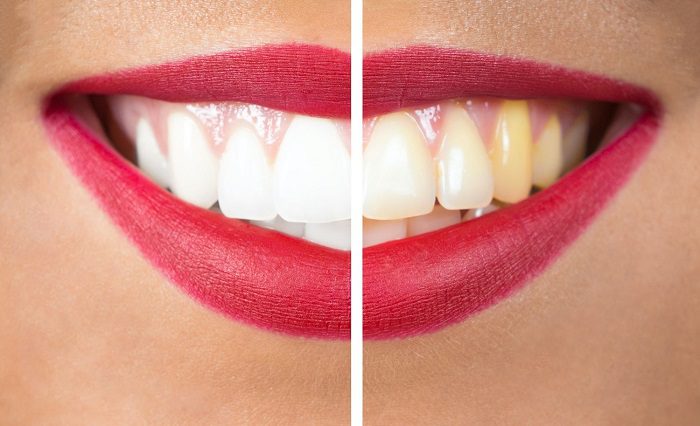Many people aspire to have a pearly white smile. But you might notice yellowing or darkening in your teeth over time. This dental discoloration can form for a number of reasons, and the stains might negatively impact your confidence in your smile.
Your dentist can brighten your tooth color with cosmetic dental procedures. But your treatment might vary depending on the kind of discoloration you develop.
A dentist will evaluate your unique smile and determine a customized treatment plan accordingly. Read on to learn the difference between the types of dental stains you could form and how your dentist can address each of them to give you the whiter smile of your dreams.


Surface Tooth Stains
Dental discoloration affecting the top layer of the enamel, the outer covering of the tooth, is known as a surface or extrinsic stain. These stains may appear as dark spots on the surface of the tooth. In some cases, your usual oral hygiene routine can get rid of this discoloration.
However, some stubborn stains may remain just deep enough that your toothbrush cannot reach them. In these instances, your dentist can help you brighten your smile with professional teeth whitening services. In-office teeth whitening involves a dentist applying bleaching gel to the teeth. The gel lifts stains closer to the surface where they can easily wash away, leaving behind a whiter smile.
Your dentist can also give you custom-made whitening trays to take home and use. These trays contain a whitening gel that will gradually lift and remove extrinsic dental stains over the course of a few weeks. A dentist can evaluate your smile to determine if this dental solution can achieve your smile aesthetic goals.
Surface stains usually form due to consuming items that contain staining agents. For instance, certain foods and beverages of a dark color will transfer tannins to the teeth. These substances absorb into the enamel to create stains on the teeth.
Pay attention to your diet to ensure you preserve your tooth color. You should also avoid smoking or chewing tobacco because these items can similarly stain your smile.
Intrinsic Dental Stains
Sometimes dental stains can develop deeper in the enamel which will not respond to bleaching materials. You might see yellowing, dullness, or other discoloration in these cases, which dentists refer to as intrinsic dental stains.
This type of discoloration can occur due to factors outside of a patient’s control. Aging, medication side effects, and dental injuries can all contribute to intrinsic tooth stain formation.
If you notice these stains in your smile, your dentist can still help you brighten your tooth color. They may recommend porcelain veneers to cover these stains and make your smile appear whiter. These custom-made shells attach to the teeth to enhance their appearance.
Veneers will resist staining or long-lasting cosmetic results for your smile. And the individualized approach to these dental fixtures ensures a natural-looking finish as well. Learn more by calling your dentist today.
